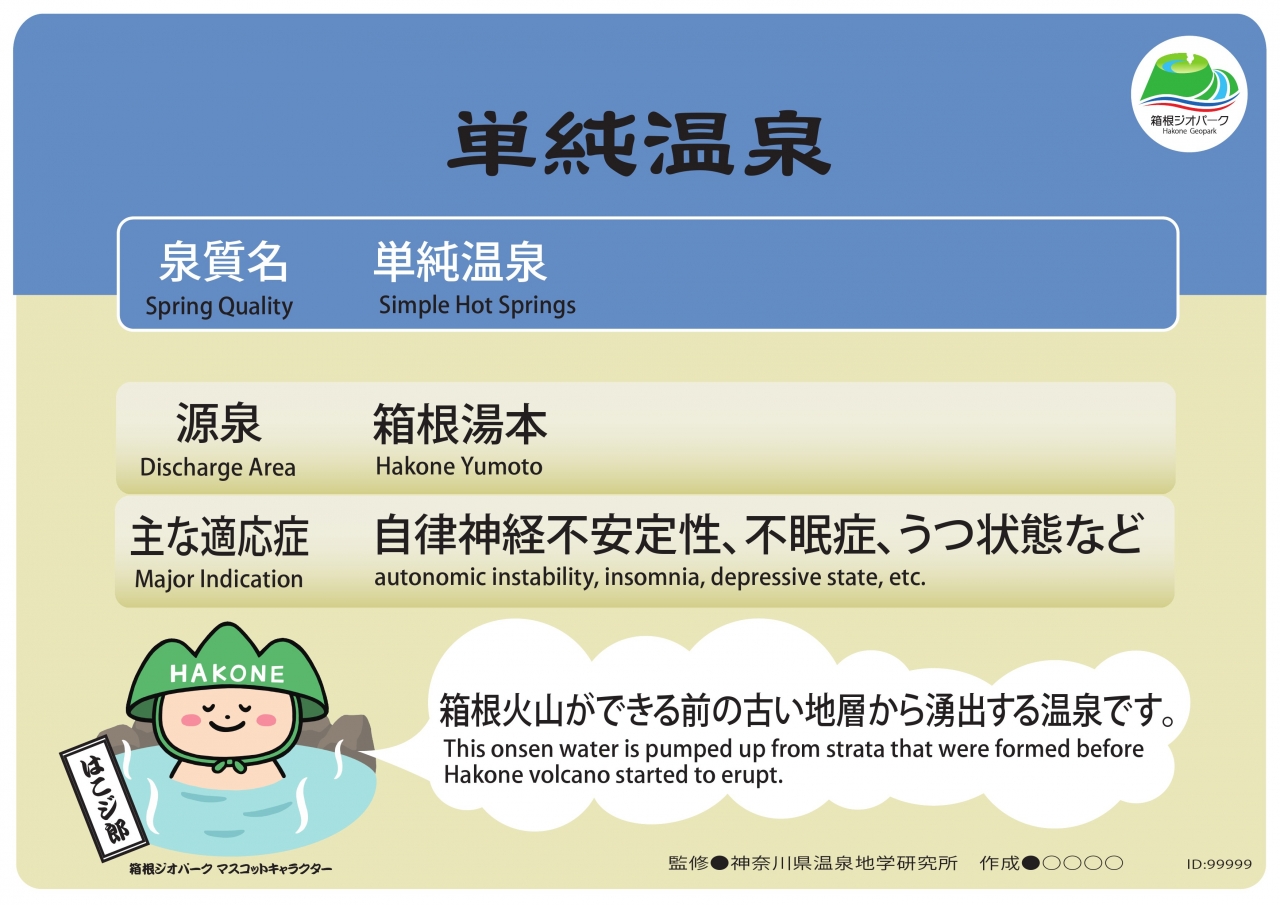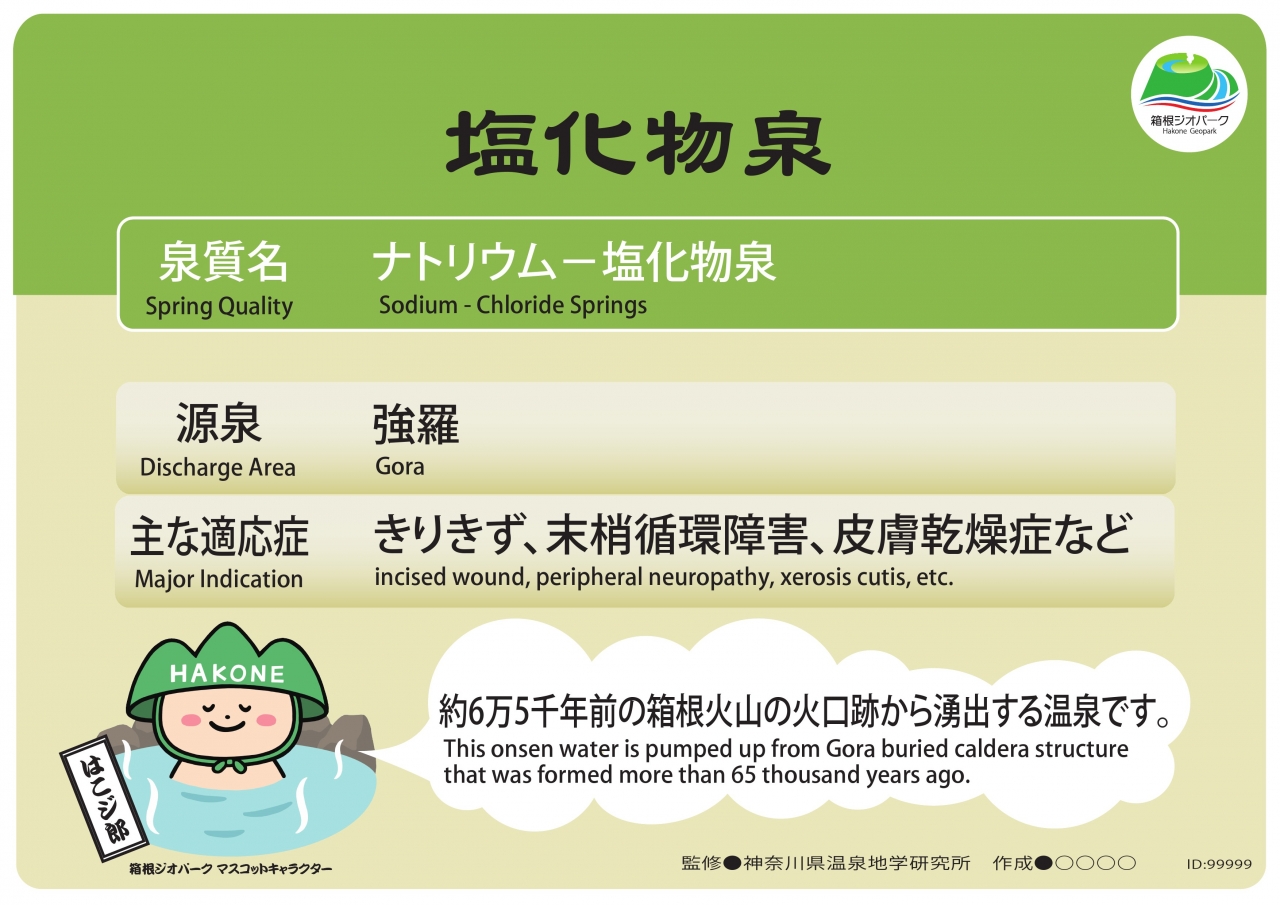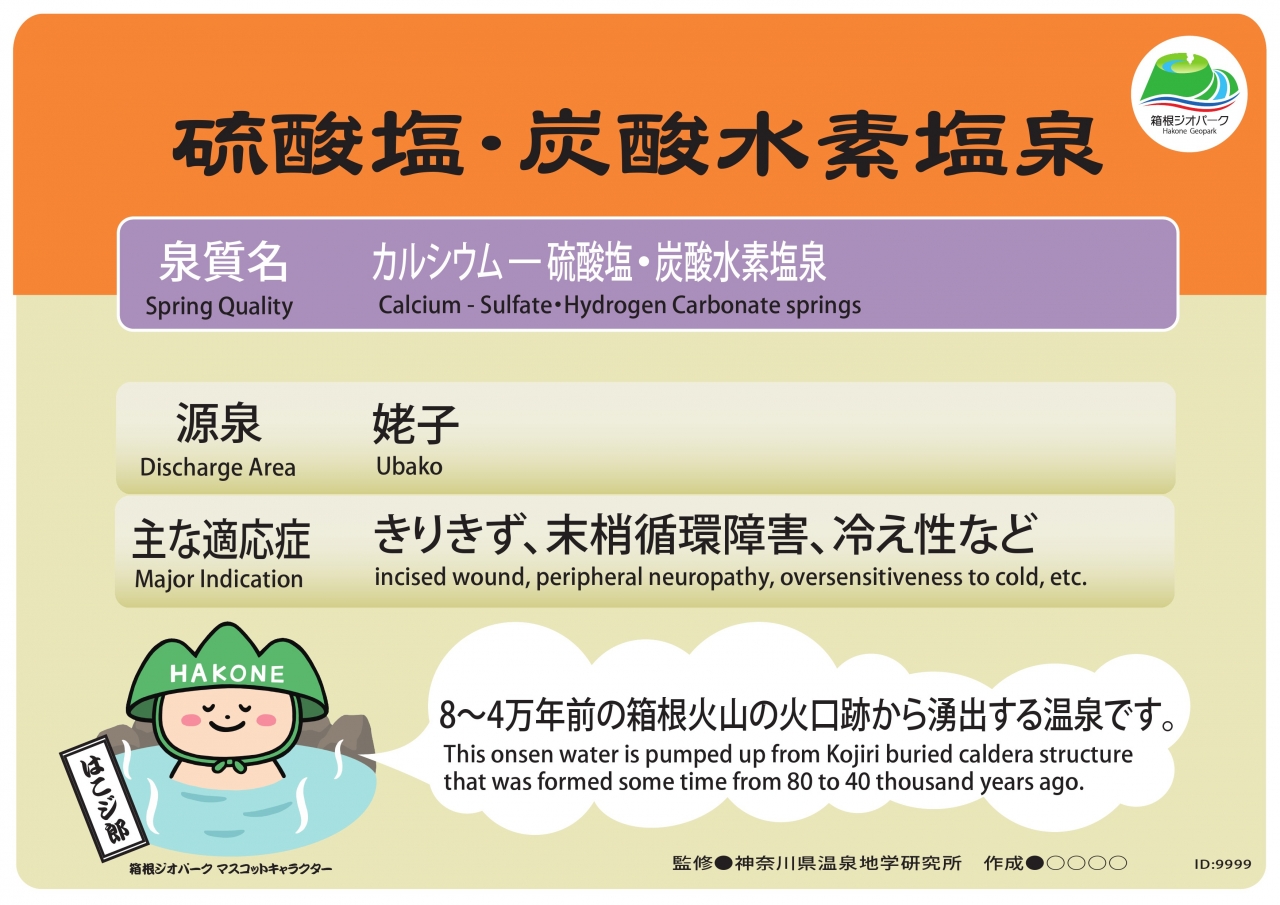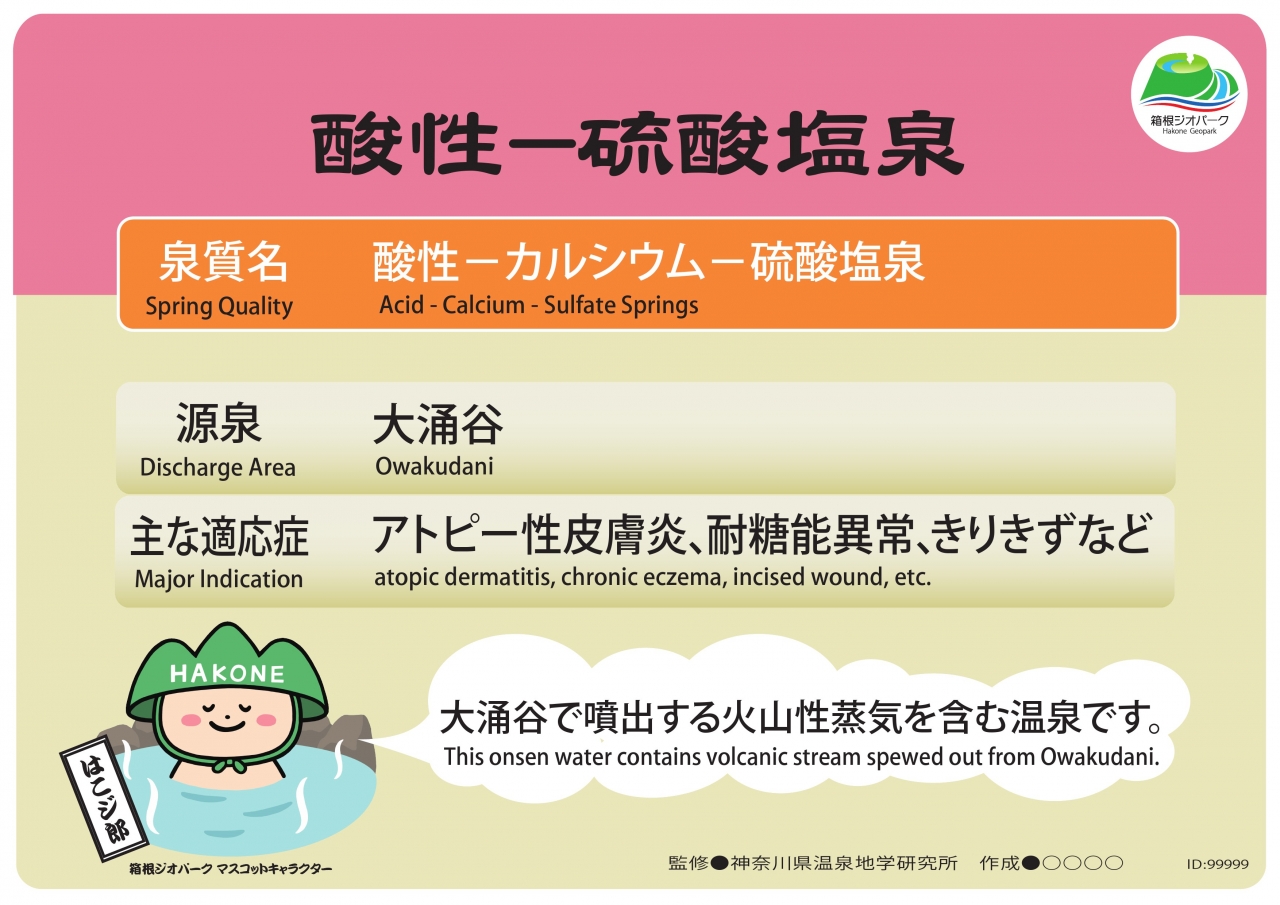H20 箱根温泉(はこねおんせん)
~多様な泉質からなる温泉~
Hakone Onsen (Hot Springs)
ジオサイト解説
箱根火山に分布している温泉は、泉質が豊富で「温泉のデパート」とも呼ばれていますが、大きく分けると、単純温泉、塩化物泉、硫酸塩泉、硫黄泉の4つのグループに分類できます。各温泉の研究により世界的にも有名な温泉形成モデルが構築され、さらに最新の火山形成史を踏まえた再検討が進められています。
箱根温泉の歴史は古く、特に湯本温泉は奈良時代の開湯と伝えられ、鎌倉時代には武将たちの湯治記録も残されています。江戸時代初期には七つの温泉場を併せて箱根七湯と総称されるようになり、当時は湯治利用が一般的でした。江戸時代後期からは温泉観光地としても知られるようになり、明治時代以降は温泉の掘削技術の発達とともに開発が進み、現在では箱根二十湯を数えるまでになっています。
The history of the Hakone Onsen is very long. Among them, Yumoto Onsen is said to have been developed during the Nara period (8th century).
By the early Edo period (17th century), seven hot springs (the “Hakone-nanayu”) had been discovered.
After the Meiji period (the late 19th century), this area was further developed using new drilling technology, and now 20 hot springs are present in Hakone. The Hakone Onsen is nicknamed “the department store of hot springs” because of their variety and high quality.
By the early Edo period (17th century), seven hot springs (the “Hakone-nanayu”) had been discovered.
After the Meiji period (the late 19th century), this area was further developed using new drilling technology, and now 20 hot springs are present in Hakone. The Hakone Onsen is nicknamed “the department store of hot springs” because of their variety and high quality.




